It’s not Champagne! In order to be legally called Champagne, the sparkling wine must come from the Champagne region of France. Now that we have that over with, let’s talk Franciacorta!
Where Location Meets Economics
Everyone has heard the statement, Location, Location, Location. Well, Franciacorta has it all! Located in the Lombardy region of northern Italy within the Brescia province, the region is nestled at the foothills of the Alps. You can find Lake Iseo to the south and the region then stretches in a near perfect square for about 15 miles through the Oglio River. In these flatlands, you can find both magnificent vineyards and olive groves.
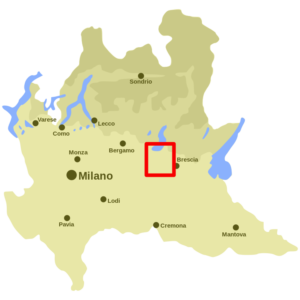
The combination of the Alps to the north and the Pianura Padana (Po Valley) to the south, Franciacorta sees extreme variations between its day and night temperatures. It is not unheard of to have a 60 degree difference, which helps the fruit remain on the vine longer and achieve balance between ripeness and acidity. Additionally, the lake effect helps diminish humidity and keep the vines aerated and healthy.
Besides being in a formidable geographical location, Franciacorta is centrally located between the banking capital of Milan and the industrial capital of Brescia. With the area’s significant financial, fashion, and industrial business expertise, wealthy entrepreneurs and other like-minded people have made Franciacorta a successful wine region. In fact, in 1277, the name of Franciacorta, was created to designate the land between Brescia and Lake Iseo. The name references ‘curtes francae’ which translates to a tax and duty free trade area.
Is it a Region or a Wine?
Franciacorta refers not only to the name of the region, but the wine and the style of production. Although the DOCG is relatively new, just over 50 years old (Champagne is around 350,) wine making in Franciacorta dates back to the Middle Ages. Research conducted by Napoleonic land register of 1809 certifies that there were almost 1000 hectares of vines.
The first reference to sparkling wine made in the area was in 1570 when Girolamo Conforti, a physician from Brescia, wrote “Libellus de vino mordaci” (the smart little wine) describing the wines of the region. It took almost 400 years from then before Berlucchi winery would produce the first known wine bearing the name Franciacorta ensuring their name is synonymous with the history of the region . Six years later, in 1967, Franciacorta was granted the DOC (Denominazione di Origine Controllata) designation.
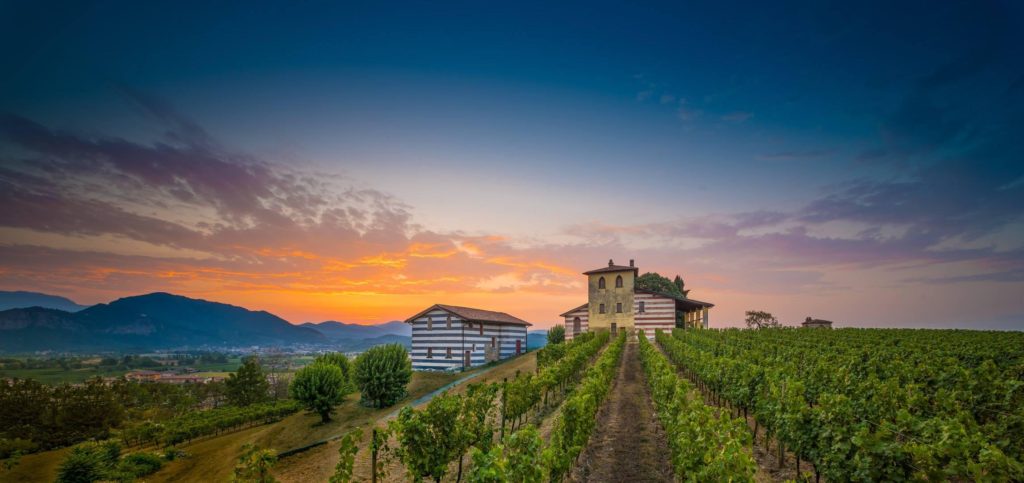
In March of 1990, twenty-nine producers came together to create the voluntary Consortium with the goal of protecting Franciacorta wine. One year later, the Franciacorta Technical Production rules were approved allowing for Italy to approve the Franciacorta trademark in November of 1991. Just a short two years later, in 1993, mandatory grape production was introduced and natural bottle fermentation was imposed.
Franciacorta, like Champagne and unlike Prosecco, make their sparkling wines using the traditional French méthode champenoise, or “Classic Method,” with the second fermentation in the bottle. Prosecco is made using the Charmat method, which uses stainless steel tanks to force the second fermentation prior to bottling. In 1995, thanks to the watchful eyes and the efforts of the Consortium, Franciacorta,the first Italian wine making region to do so, received the prestigious DOCG (Registered and Guaranteed Designation of Origin) which assures the highest level of quality for an Italian wine.
Get to Know Franciacorta
Just like Cher, Madonna, Beyonce and Pink, Franciacorta goes by one name. You will see it prominently displayed on the label. A single word that defines the land, the production method and the wine itself. It can only be produced using four grapes; Chardonnay, Pinot Nero, Pinot Bianco and Erbamat. Strict regulations require that Pinot Bianco grapes can not make up more than 50% of the blend and Erbamat (an ancient variety of white grapes originally from the province of Brescia) no more than 10%.
The Consortium also dictates that vineyards must maintain yields less than 12 tons per hectare and they must be harvested by hand and sorted separately. Base wines are tasted about 7 months later, blending occurs and then the liqeur de tirage is added to begin the second fermentation. Carbon dioxide builds up to the 6 atmospheres of pressure, at which point the bottles are aged on lees for various length of time and then dosage (sweetness) performed depending on the type of Franciacorta desired.
The Label Tells All
There are several categories of Franciacorta depending on the grapes used and the aging process. Knowing the “rules” can help you determine which style your palate would lean towards, however I highly suggest breaking out of your comfort zone and trying them all. You never know, your palate may surprise you!
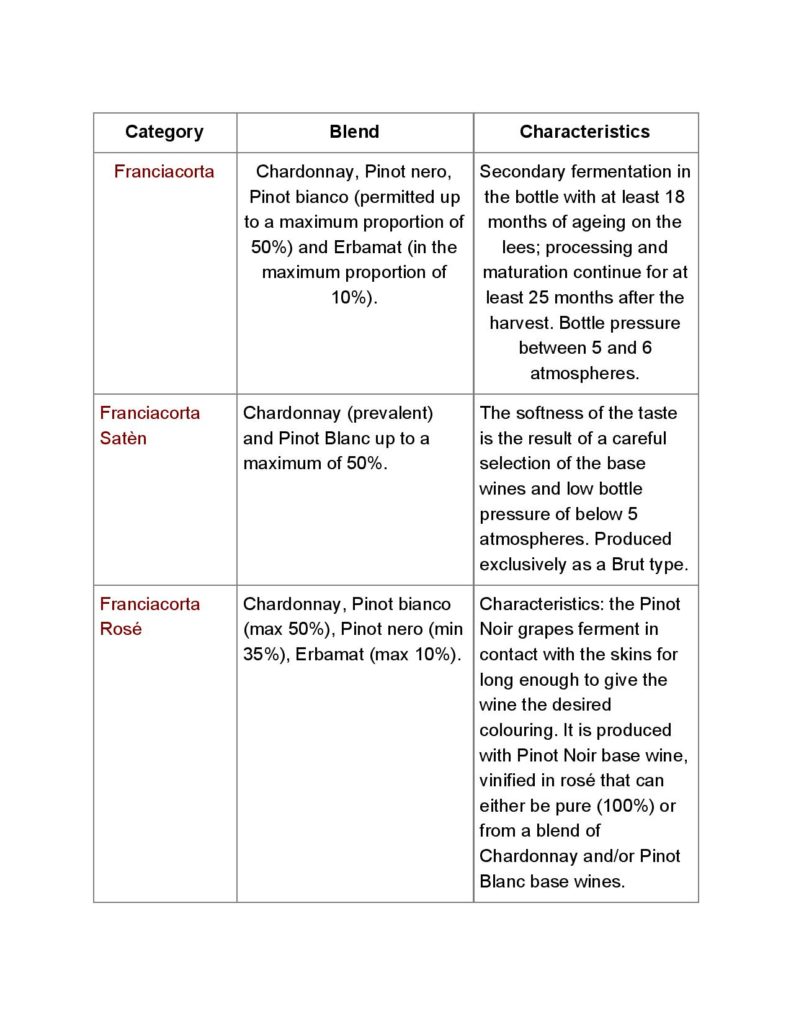
*chart created from information directly obtained from Franciacorta’s website
When you see Franciacorta Millesimato or Franciacorta Riserva on the label, these bottles have seen additional aging times and are further distinctions of the above categories.
If you see Franciacorta Millesimato on the label, it indicates that at least 85% of the wine in the bottle comes from a single vintage. This is a special bottle since it is made only in years of extreme quality. It is required that this wine can only be sold any earlier than 37 months after harvest. You can find it in Pas Dosé, Extra Brut, Brut, Extra Dry dosage.
Another distinction you may see is Franciacorta Riserva. These wines are even more specialized in that in addition to being a single vintage wine, they must remain on lees for at least five and a half years! You can expect some serious complexity from these wines. Athough Satèn will only be produced in the Brut dosage, you can find the Franciacorta and the Rosé in Pas Dosé, Extra Brut, Brut, and Extra Dry.
What is Dosage?
Traditional Method of making sparkling is extremely labor intensive. Winemakers take the cuvee and tirage (sugar, wine and yest) and put it in the bottle. The use a crown cap and bidule (plastic) so the bottle itself acts as the fermenting vessel. Fermentation may take between one and three months. During this time, the lees (dead yeast cells) will break up and release the flavor. Less lees aging tends to give an apple flavor while longer aging moves into the bread/toasty flavors.
Riddling is the process of disgorging the lees. The neck is placed in a-24 degrees C brine solution, the crown cap is removed quickly and the dosage (sweetner, cuvee and wine) is added to replace the liquid lost when opening and to bring the wine to the desired sweetness level. Then the bottle is officially corked and the cage placed on top.
It is the amount of sweetness that is added that determines the dosage. According to the Franciacorta website the different doses of liquor added after disgorgement, which gives them their own original and distinctive personalities:
~Pas dosé (‘Non-dosed’, with sugar up to 3 g/l from the natural residue in the wine) – the driest in the Franciacorta range
~Extra Brut (sugar up to 6 g/l) – very dry
~Brut (sugar less than 12 g/l) – dry but a little softer than Extra Brut, it’s certainly the most versatile type of Franciacorta
~Extra Dry (sugar 12-17 g/l) – soft, with a slightly higher dosage than the classic Brut, making it a suitable pairing for a wide variety of foods
~Sec or Dry (sugar 17-32 g/l) – less dry and slightly sweet
~Demi-Sec (sugar 33-50 g/l) – has a sweetish flavor due to the relatively high dose of sugar, meaning it goes well with desserts.
My Selections
I attended the Franciacorta New York Festival in June. It was my first experience tasting wines from this region and I honestly can say I was mesmerized by the overall quality. Table after table, I tastes exceptional wines. I have become a fan and am constantly on the lookout for some bottles. Below are some of the labels that stood out to me.
Berlucchi Vineyards
As mentioned earlier in this post, Berlucchi Vineyards were the first to produce a bottle using the Franciacorta name and they are still producing exceptional wines today. Completely converted to organic viticulture and farming over 550 hectares of vineyards they produce wine from both estate fruit and from trusted long-term contract growers. Find out more about Berlucchi Vineyards on their website.
With two philosophies to wine making; pursue highest qualities and respect the environment, Cantina Chiara Ziliani produces wines with the soil in mind. The winery is located in the village of Provaglio d’Iseo on 17 hectares. They have 12 under vine on slopes that vary by 50 meters from the highest to lowest. In addition to the grapes for Franciacorta, Merlot, Cabernet Sauvignon and Cabernet Franc, are under vine for the production of reserve red wines.
The roots that tie the Majolini Family to its land are deep and start from far away – Ezio Maiolini explains – We must go back to the XVth century, when our family arrives in Ome, establishing itself. The tie with viticulture is born almost immediately and already our last name, borrowed right from an autoctonous grape variety, the one of Majolina, is the witness of this adventure.
The tie with our land has brought us great satisfactions! Especially to our father Valentino from whom we have inherited the passion and the love from wine production. It is him who decided, around the end of the 60’s, to renovate the old family winery and to start the cultivation of Ruc di Gnoc, a magnificent high hilled vineyard that still today produces the same named wine.
BellaVista
Together, owner Vittorio Moretti and winemaker Mattia Vezzola work in 3,280 feet of underground cellars and a state of the art winery complete with helipad. The estate has 1,250 surrounding acres of land with 462 acres of which are now under vine. The winery was purchased in 1977 and the first bottle was produced just a short two years later. Today, their vineyards constitute 8% of the entire appellation. They also produce still wine and are known for their extended aging time averaging between 36 to 48 months.
I must admit that I was drawn to this last suggestion because of the bottle design. It caught my eye and it is beautiful. There was quite the crowd around this table. Beauty of the bottle aside, I would not have decided to mention them in this post unless the wine quality stood up to the bottle artistry.
Located near Lake Iseo is another family run winery in which the second generation is now producing the wines. Roberto, the patriarch of the family, purchased the land and winery in 1990 from a widow who was a family friend he would often help on weekends and released his first Franciacorta Brut in 1992. Focusing on top-quality equipment and precise vineyard management, Ferghettina has a state-of-the-art, 64,600-square-foot new winery that is integrated into the landscape.
Get yours!
The event had wineries that were both imported into the United States and those that weren’t. Hopefully more will find their way onto our shelves. In the meantime, I’ve listed the importers of my selections. Head out and find yourself a bottle or two or three and let me know your thoughts.
Berlucchi Vineyards – imported by Terlato Wines, Lake Bluff, Illinois
Cantine Majolini – imported by Banville Wine, New York, New York
Ferghetinna – imported by Empson USA Inc., Alexandria, Virginia
Bellavista – imported by Vision Wine Brands, New York
Ziliani – currently not imported
~Sláinte!

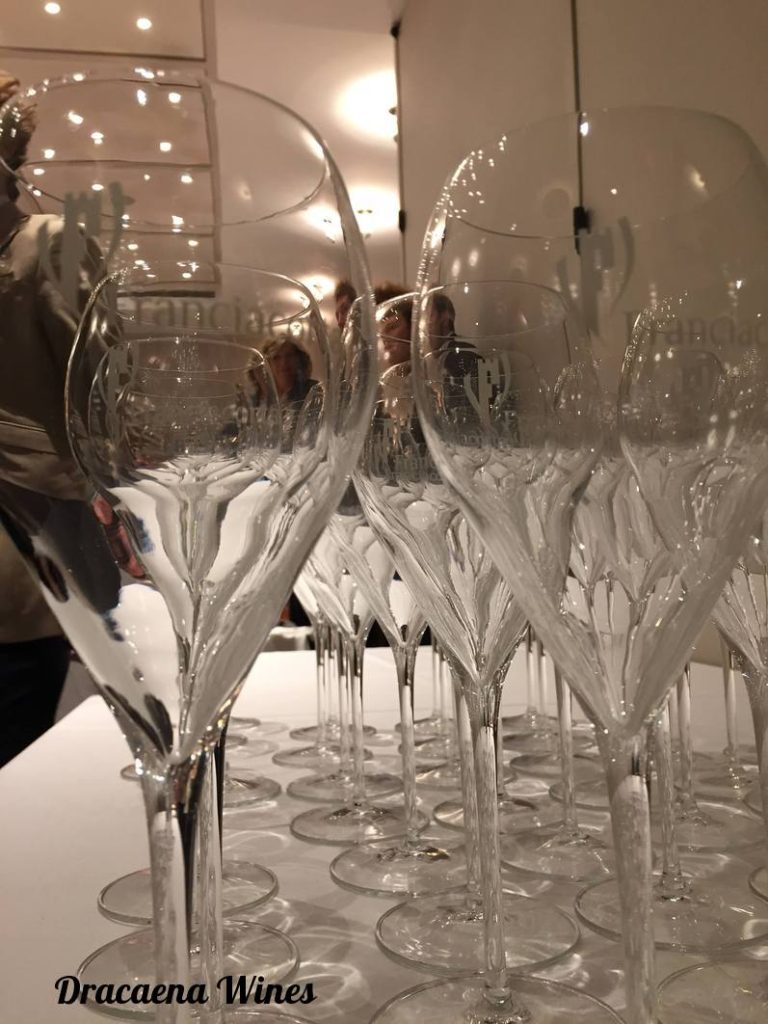
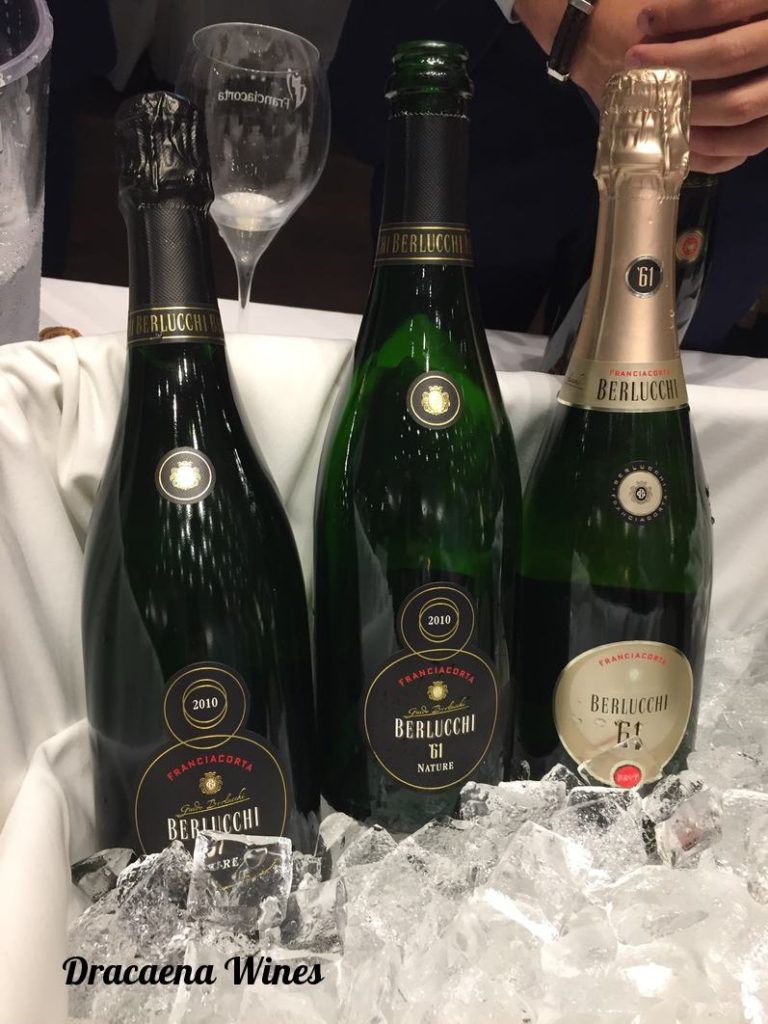
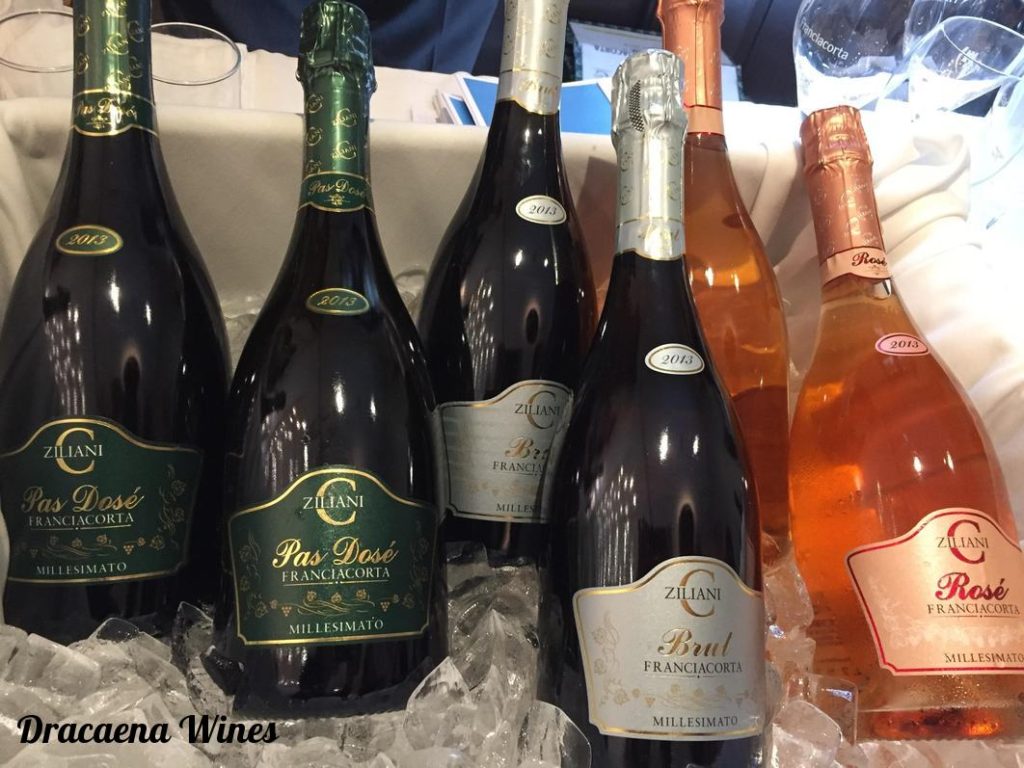
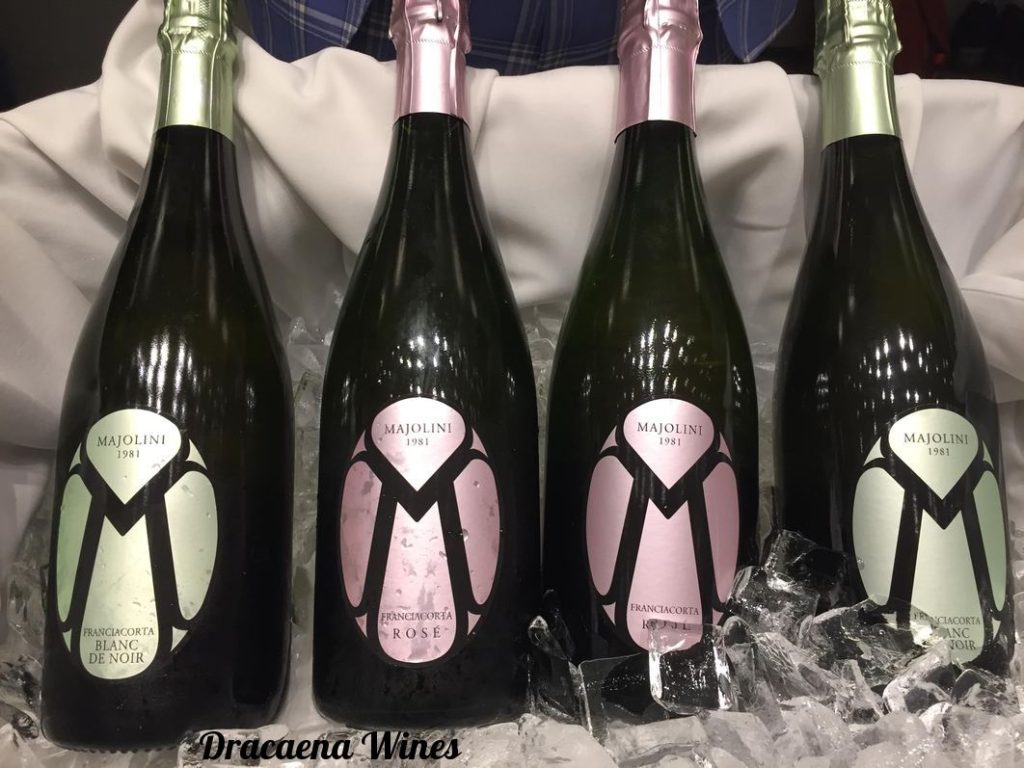

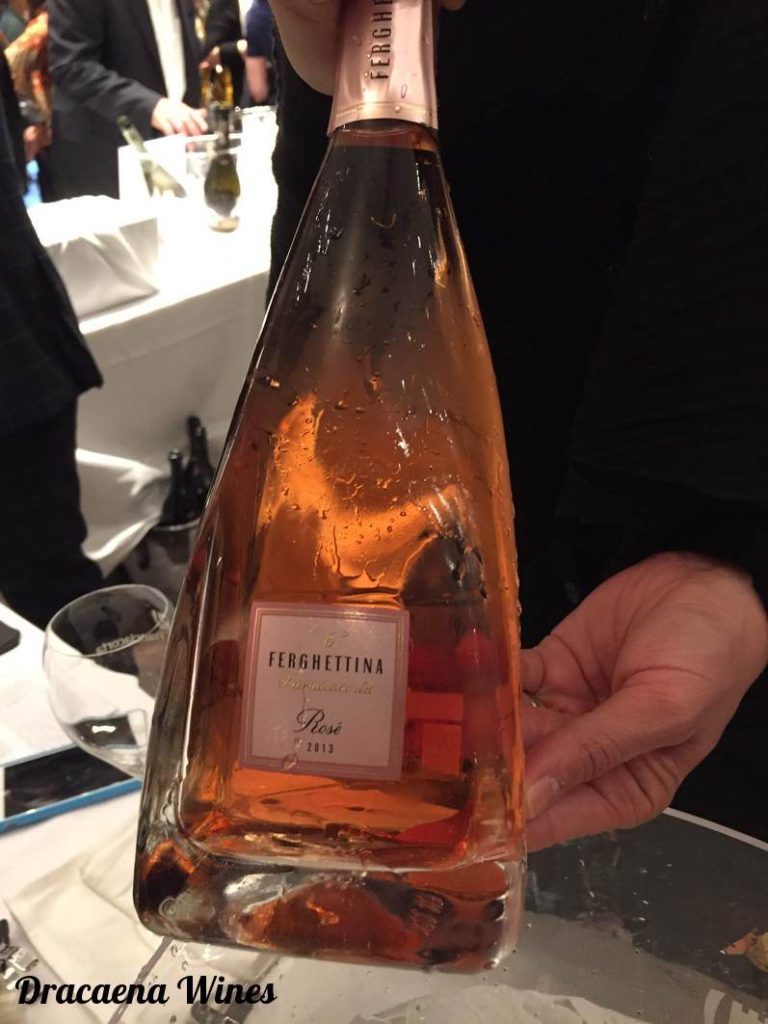
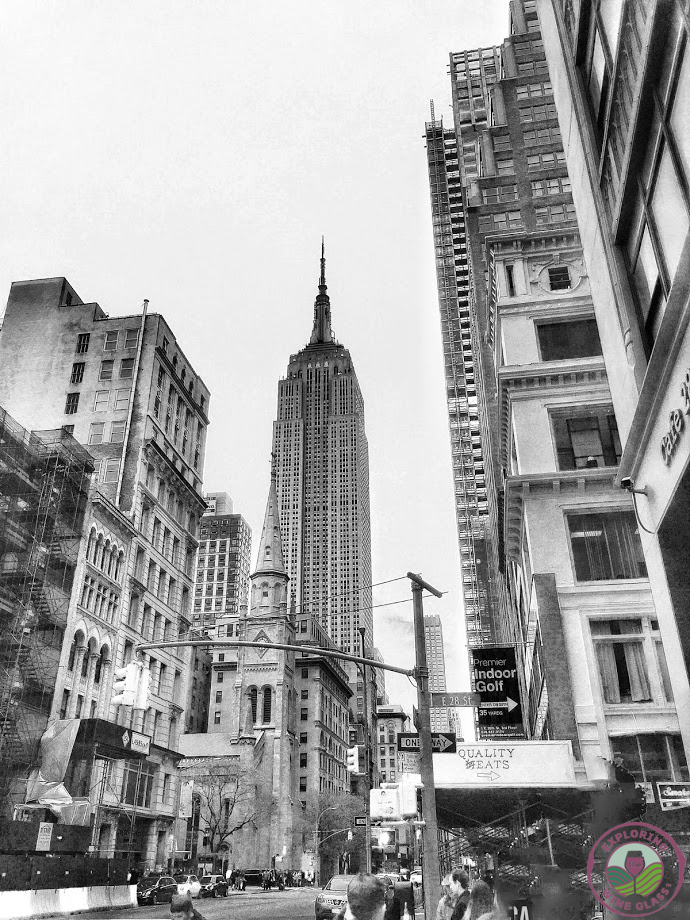
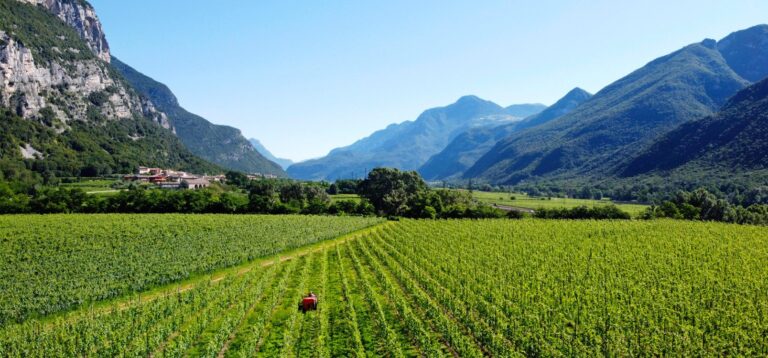
I love and appreciate you writing such an in-depth article about Franciacorta.
I am glad you like it Michelle. I was so impressed by the quality of the wines. I hope to be able to learn even more in the future.
Nice article Lori- thorough and detailed! You’re lucky to attend the Franciacorta event in NY. I’m working my way through the various styles of Fraciacorta and have tasted a few you list. But i”ve yet to try a rosé. Hopefully soon!
Thank you Lynn. I was so happy I was able to attend the event. It must be tough work, going through the various styles of Franciacorta!? LOL If you need help, I volunteer!!!
Great timing! I’ve been studying (& drinking!) my way through Franciacorta, but have unfortunately had a couple of very meh bottles the past few days. :-/ Will keep my eyes out for your recommendations. The producers sound like they put a lot of time and care into their wines . . . and are probably putting out much better bubbles as a result.
Thank you. I’m glad my post could help you in your studies. Yes, keep an eye out for the ones I mentioned. They really were exceptional. They do take so much time and effort to produce the wines.